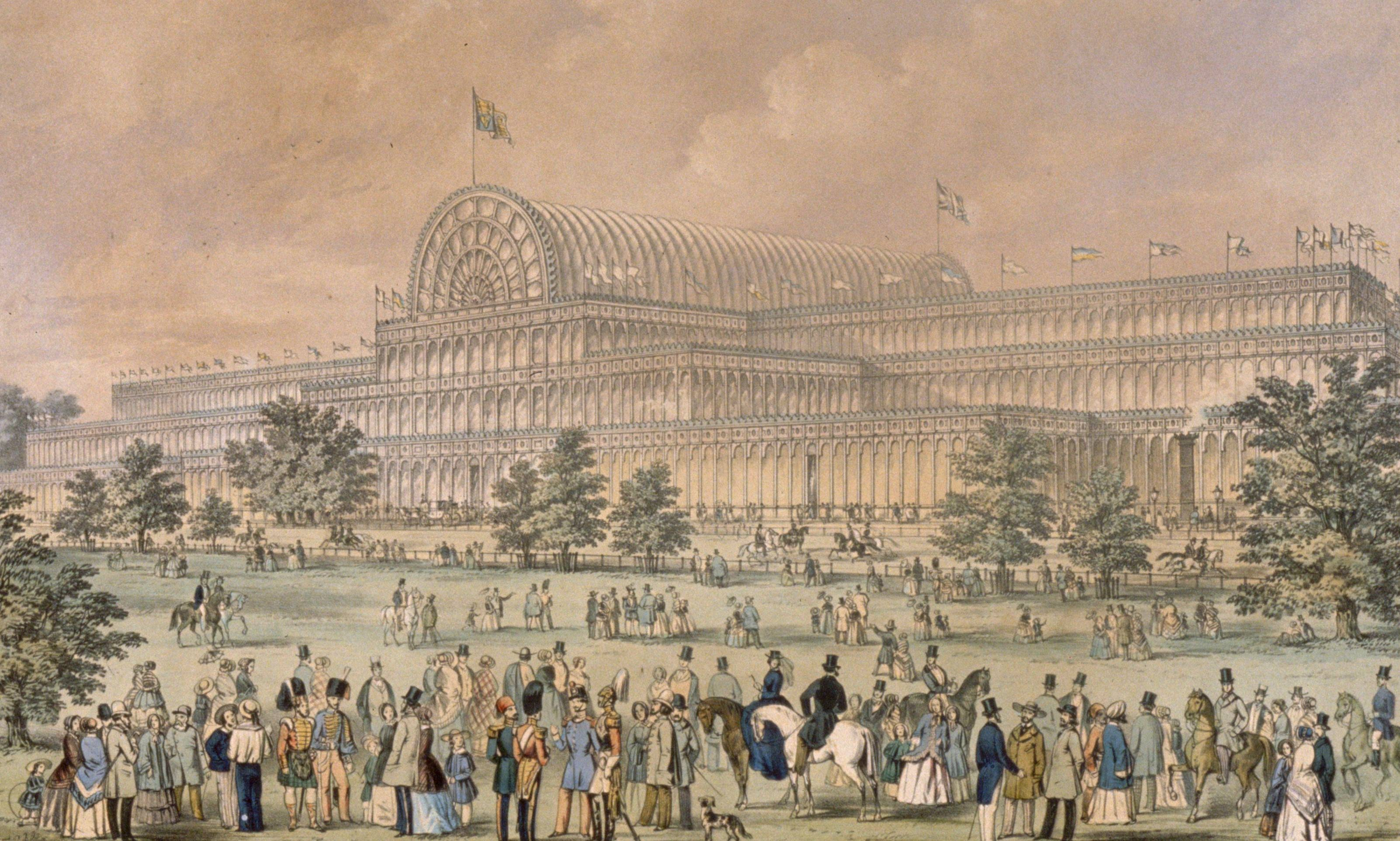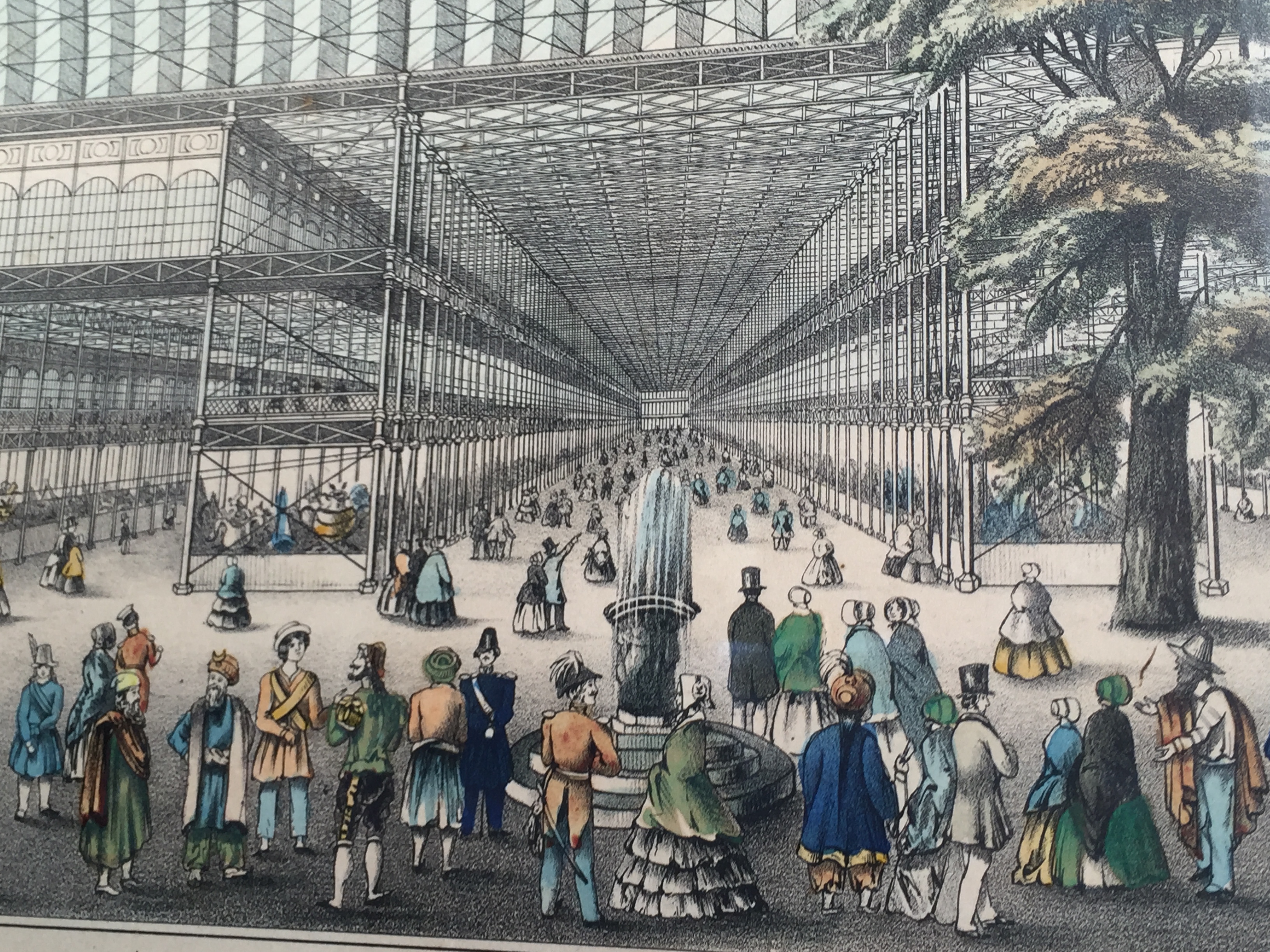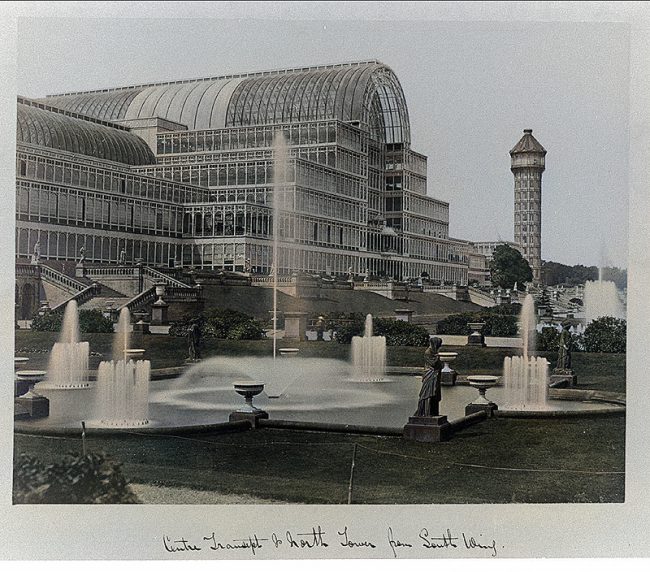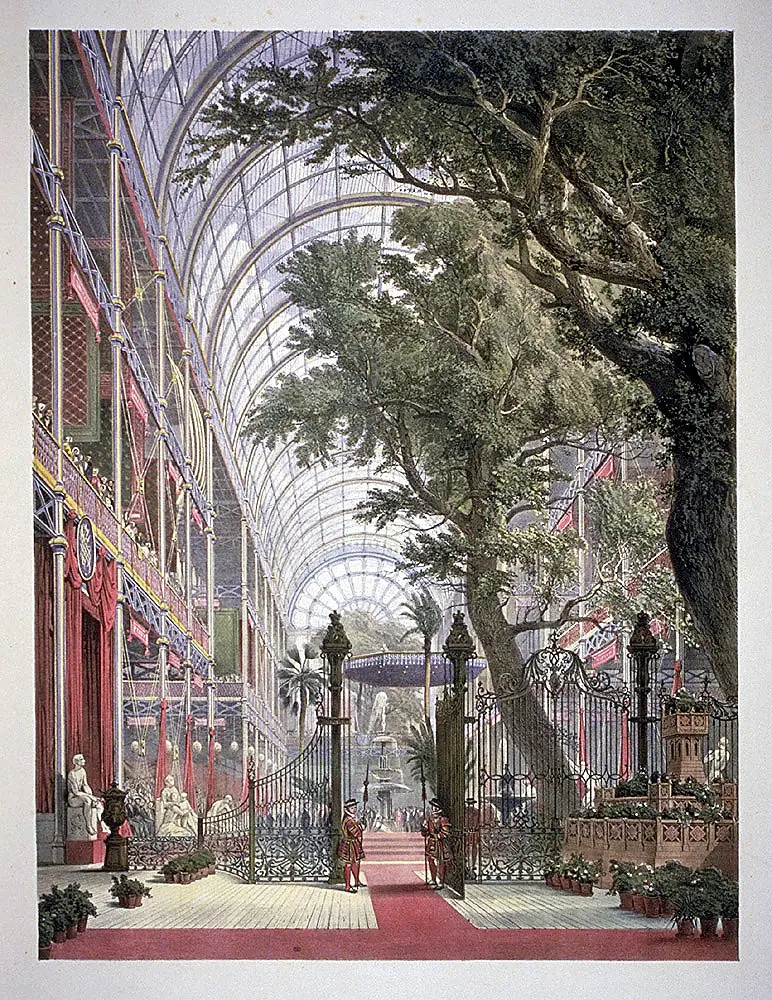The Great Exhibition and the Crystal Palace SciHi Blog

Crystal Palace 1851 Ninterior View Of The Crystal Palace Site Of The
The Crystal Palace was a huge glass and iron structure originally built in 1851 for the Great Exhibition held in London's Hyde Park. Prince Albert, head of the Society of Arts, had the idea of an.

Great London Art The Crystal Palace in London During the Great
The Crystal Palace was originally created by Joseph Paxton to house the Exhibition of the Industry of all Nations that was to be staged in Hyde Park, London in 1851. When, after six months, the Great Exhibition closed its doors over six million people had visited it. Joseph Paxton was knighted and public opinion clamoured, without success, for.

Crystal Palace print, The Great Exhibition, 1851 Moorabool Antiques
The Crystal Palace was a glass and cast iron structure built in London, England, for the Great Exhibition of 1851.The building was designed by Sir Joseph Paxton, an architect and gardener, and.

The Crystal Palace London By Gaslight
The Crystal Palace was first erected in Hyde Park in 1850-51 to house the world's first international trade fair, the Great Exhibition of 1851. The Exhibition's origins lay in the national exhibitions of the Royal Society of Arts (RSA), and particularly in the Paris Exposition of 1849. One visitor to Paris who was particularly impressed was a.

Crystal Palace England Exhibition / How it all began it all started at
The exhibition opened in the Crystal Palace on May 1, 1851. The Crystal Palace, designed by Sir Joseph Paxton, was a remarkable construction of prefabricated parts. It consisted of an intricate network of slender iron rods sustaining walls of clear glass. The main body of the building was 1,848 feet (563 metres) long and 408 feet (124 metres.

The Crystal Palace The VICTORIAN Era Pinterest Crystal palace
The Great Exhibition of 1851 is widely regarded as being one of the most enduring symbols of Victorian Britain. Hosted inside a huge iron-and-glass structure in London's Hyde Park dubbed the 'Crystal Palace', the extravaganza showcased some of the finest arts, crafts and industrial innovations of the era. Although the event boasted.

Crystal Palace, London, built for the Great Exhibition, 1851 Stock
The Crystal Palace was a cast iron and plate glass structure, originally built in Hyde Park, London, to house the Great Exhibition of 1851. The exhibition took place from 1 May to 15 October 1851, and more than 14,000 exhibitors from around the world gathered in its 990,000 square feet (92,000 m 2) exhibition space to display examples of technology developed in the Industrial Revolution.

FileCrystal Palace Great Exhibition tree 1851.png
The Great Exhibition was in Hyde Park in London.; A huge glass and iron building called the Crystal Palace was built especially for the Exhibition. It took nine months to build.; Crystal Palace.

The Great Exhibition and the Crystal Palace SciHi Blog
The Crystal Palace was originally created by Joseph Paxton to house the Exhibition of the Industry of all Nations that was to be staged in Hyde Park, London in 1851. When, after six months, the Great Exhibition closed its doors over six million people had visited it. Joseph Paxton was knighted and public opinion clamoured, without success, for.

FileCrystal Palace interior.jpg Wikipedia
The Crystal Palace Exhibition at Hyde Park, London went on for 7 months straight. The closure of the exhibition was given on 15 October 1851. A total of six million people have been accounted to have visited the Crytal Palace Exhibition. On an average, more than 40000 people attended the exhibition daily.

Examining the Crystal Palace and Other Cultural Artifacts of the World
Compare Hotels in Crystal Palace, England. View Deals and Reserve Now on Expedia. Get the Most Out of Your Trip with Package Deals. Explore Fun Things to Do on Your Stay.

Legacy Molds and Models The Crystal Palace a Victorian time capsule
Crystal Palace is a leafy and hilly area in South London, named after the Crystal Palace Exhibition building which stood in the area from 1854, until it was destroyed by fire in 1936. About 7 miles (11 km) southeast of Charing Cross , it includes one of the highest points in London , at 367 feet (112 m), [3] offering views over the capital.

Great Exhibition, Crystal Palace, Hyde Park, London, 1851 Stock Image
On 15 October 1851 the Great Exhibition at Hyde Park closed having received over 6 million visitors. The popularity of the event led to concern about the fate of the building and the Crystal Palace Company was established in June 1852 to purchase it. A site was identified in Sydenham, Kent for its new location and construction commenced in.

Crystal Palace Exhibition 1851 Events in the Victorian Era
The Great Exhibition - facts and figures. The 'Crystal Palace' exhibition hall was 92 km2. It took 5,000 labourers just five months to build. It ran for six months from May - October 1851. There were 14,000 exhibitors, and 100,000 objects from around the world. It was visited by six million people.

The Great Exhibition Of 1851 And Its Celebration In 1951 As Viewed In
The Great Exhibition of 1851 ran from May to October and during this time six million people passed through those crystal doors. The event proved to be the most successful ever staged and became one of the defining points of the nineteenth century. Not only was the event self-financing, it even turned in a small profit.

pics of the crystal palace Yahoo Image Search Results in 2020
In 1847 the Royal Society of Arts organized an exhibition with the patronage of Prince Albert. Larger events followed in the succeeding two years. The idea of an international exhibition in London was formed from Cole's visit to Paris. A meeting was held between Prince Albert and members of the society at Buckingham Palace in June 1849.